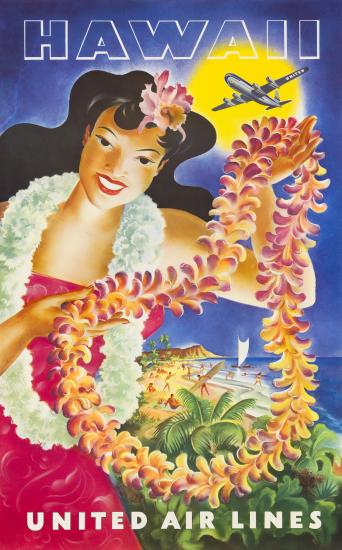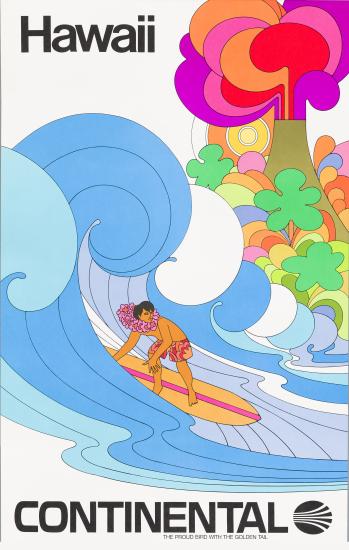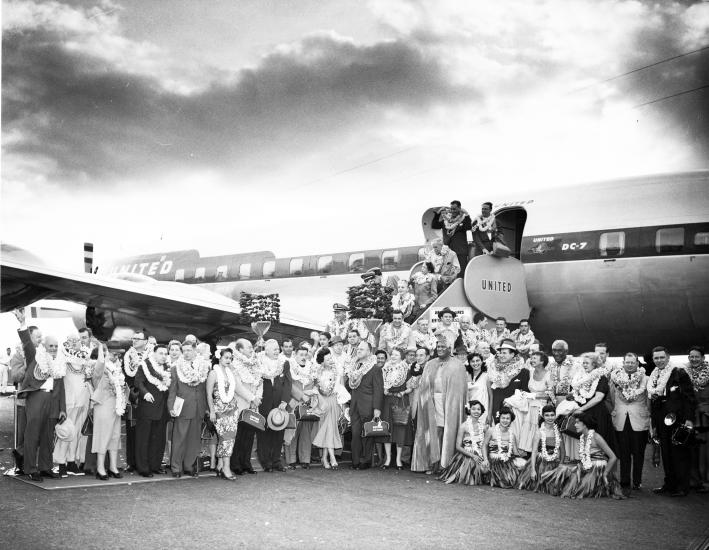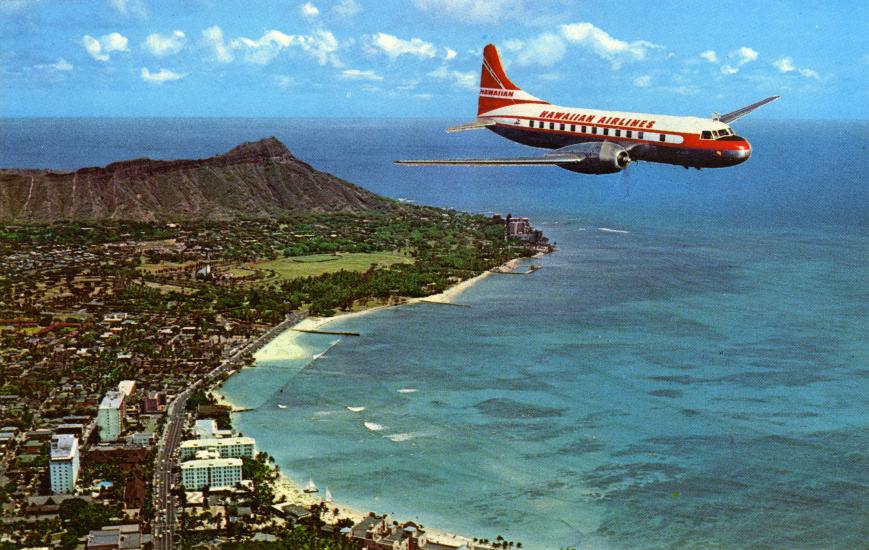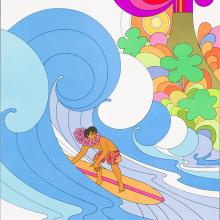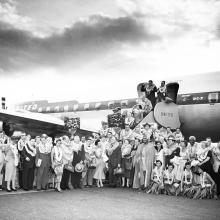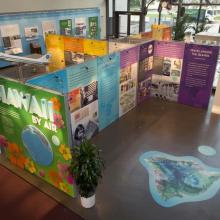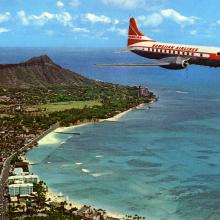
Media Inquiries
Public Inquiries
New Exhibition Explores Evolution of Air Travel to the Hawaiian Islands
Even if a Hawaiian dream vacation is not in their plans this year, visitors can experience the next best thing at the Smithsonian’s National Air and Space Museum in Washington, D.C. “Hawaii by Air” opens at the museum on the National Mall July 25. The exhibition features captivating Hawaiian travel posters that will leave visitors longing for island beaches. Photographs and ephemera culled mainly from the museum’s collections explore how air travel to Hawaii developed and grew, how the travel experience evolved along with the airplane and how air travel changed Hawaii.
Few people realize that Hawaii is one of the most remote places on Earth. Europeans began traveling to the islands in the late 1700s. By the mid-1800s, naturalists, writers, artists and scientists were braving the weeks-long ocean journey to experience Hawaii’s beauty, Polynesian culture and active volcanoes. The islands attracted the likes of writers Mark Twain and Isabella Bird. As travel by sea improved, Hawaii began encouraging tourism and promoting itself as the “Paradise of the Pacific.”
In 1910, only seven years after the Wright brothers’ historic flights at Kitty Hawk, J.C. “Bud” Mars made the first airplane flight in Hawaii. But it was not until 1925 that the U.S. Navy made the first attempt to fly to Hawaii from the mainland. In 1927, a U.S. Army airplane made the first successful flight to Hawaii. Attempts by civilians to make the dangerous flight soon followed, many resulting in tragedy.
Pan American Airways opened the first transpacific air route in 1935 and brought the first air service to Hawaii. It began bringing small numbers of passengers to Hawaii the following year on its famous flying clipper ships. Flying to Hawaii was luxurious but expensive; most people still traveled by ocean liner. That changed after World War II, when new propeller-driven airliners and then jets made travel to this remote destination much more common, comfortable and affordable. Hawaii experienced a tourism boom that exceeded all expectations.
Air travel transformed Hawaii. It made tourism the foundation of the state’s economy and spurred growth and development throughout the islands. It helped shape Hawaii into the Pacific crossroads of commerce and culture it is today.
“Hawaii by Air” not only tells the story of how air travel to the islands developed, but also how the airplane changed the travel experience. Firsthand accounts and reproductions of airline ephemera illustrate what travel to and among the islands was like, from sailing ships in the 1860s to the first daring transpacific flights in the 1920s to Stratocruisers in the 1950s and jets in the 1960s and beyond. The exhibition also includes airplane models, airline uniform badges, historic film footage, a high-resolution satellite image of the islands, broadcasts from a vintage Hawaiian radio show and live Hawaiian plants. It will be open until July 2015.
“Hawaii by Air” is made possible through the support of the Conrad N. Hilton Foundation.
The National Air and Space Museum building on the National Mall in Washington, D.C., is located at Sixth Street and Independence Avenue S.W. The museum’s Steven F. Udvar-Hazy Center is located in Chantilly, Va., near Washington Dulles International Airport. Attendance at both buildings combined exceeded 8 million in 2013, making it the most visited museum in America. The museum’s research, collections, exhibitions and programs focus on aeronautical history, space history and planetary studies. Both buildings are open from 10 a.m. until 5:30 p.m. every day (closed Dec. 25).
# # #
